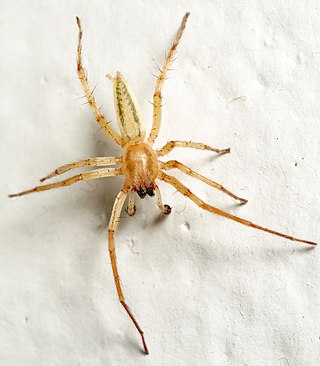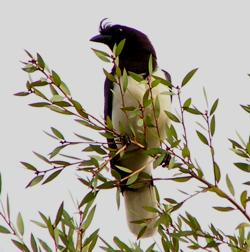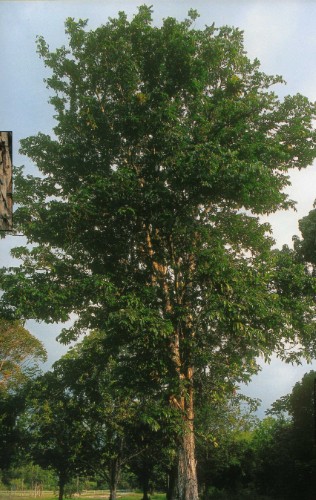
The Amazon rainforest, also called Amazon jungle or Amazonia, is a moist broadleaf tropical rainforest in the Amazon biome that covers most of the Amazon basin of South America. This basin encompasses 7,000,000 km2 (2,700,000 sq mi), of which 6,000,000 km2 (2,300,000 sq mi) are covered by the rainforest. This region includes territory belonging to nine nations and 3,344 indigenous territories.

Iniidae is a family of river dolphins containing one living genus, Inia, and four extinct genera. The extant genus inhabits the river basins of South America, but the family formerly had a wider presence across the Atlantic Ocean.

Anyphaenidae is a family of araneomorph spiders, sometimes called anyphaenid sac spiders or ghost spiders. They are distinguished from the sac spiders of the family Clubionidae and other spiders by having the abdominal spiracle placed one third to one half of the way anterior to the spinnerets toward the epigastric furrow on the underside of the abdomen. In most spiders the spiracle is just anterior to the spinnerets.

Lundomys molitor, also known as Lund's amphibious rat or the greater marsh rat, is a semiaquatic rat species from southeastern South America.

The curl-crested jay is a species of jay native to South America.

The flat-faced fruit-eating bat is a South American species of bat in the family Phyllostomidae. It is sometimes considered a subspecies of the Jamaican fruit bat, but can be distinguished by its larger size, the presence of faint stripes on the face, and of a third molar tooth on each side of the upper jaw. Genetic analysis has also shown that the two species may not be closely related.

The minute tree-fungus beetles, family Ciidae, are a sizeable group of beetles which inhabit Polyporales bracket fungi or coarse woody debris. Most numerous in warmer regions, they are nonetheless widespread and a considerable number of species occur as far polewards as Scandinavia for example.
Lophotrichus is a genus of fungi in the family Microascaceae.

Euaugaptilus is a genus of copepods. The genus contains bioluminescent species.

Cnesterodon is a genus of poeciliids native to South America.

Caponiidae is a family of ecribellate haplogyne spiders that are unusual in a number of ways. They differ from other spiders in lacking book lungs and having the posterior median spinnerets anteriorly displaced to form a transverse row with the anterior lateral spinnerets. Most species have only two eyes, which is also unusual among spiders. A few species of Caponiidae variously have four, six or eight eyes. In some species the number of eyes will increase when the spiderling changes its skin as it grows towards adulthood.

Carapa guianensis is a species of tree in the family Meliaceae, also known by the common names andiroba or crabwood.
Cnesterodon carnegiei, commonly known as Carnegie's toothcarp, is a species of poeciliid native to southeastern Brazil and Uruguay.
Cnesterodon raddai, the Resistencia toothcarp, is a species of poeciliid native to the Paraguay and lower Paraná River basins.
Cnesterodon omorgmatos, the Cilida toothcarp, is a species of poeciliid native to the Paranapanema River basin in Brazil.
Cnesterodon holopteros, the whole fin toothcarp, is a species of poeciliid native to the Río Uruguai drainage.
Cnesterodon iguape, the Iporanga tooth carp, is a species of poeciliid from the upper Rio Iporanga in Brazil.
Cnesterodon septentrionalis, is a species of poeciliid found in Brazil.

Cnesterodon decemmaculatus, the ten spotted live-bearer, is a species of poeciliid native to Argentina and Uruguay.
Cnesterodon pirai, the Almeida toothcarp, is a species of poeciliid that is only know from its type locality, the arroyo Almeida, an affluent of the arroyo Cuñá-Pirú, in the Río Paraná basin, Aristóbulo del Valle, Misiones in Argentina.









